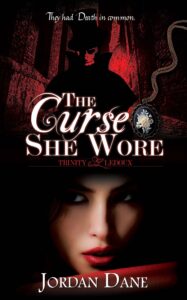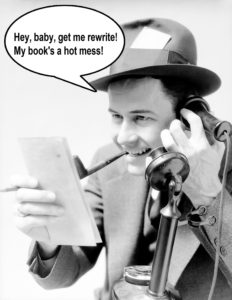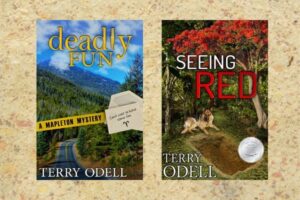 If writers reach immortality through our books, then what might readers remember most about you?
If writers reach immortality through our books, then what might readers remember most about you?
Does that image match what your family and friends will remember?
How might it differ?


Wizarding World of Harry Potter : Hogwarts
What makes a book setting memorable? We have all read books where the setting gripped us and drew us in as readers, but any setting takes research to develop the world we will portray in our books. Even settings we are familiar with, like a hometown, take vision to add to the plot we will develop. It takes even more to create a fictional world no one has ever known or a futuristic setting we want to make vivid in the reader’s mind. Some vivid setting books that come to mind for me are: the Hunger Games series, Harry Potter, and Game of Thrones. If you have a series in mind, your canvas for storytelling must be large and hold its mysteries for future plot lines. A good setting can become a character in your books.
Many new or aspiring authors don’t include much of a setting. They tend to focus on their plot, the actions of the characters and the dialogue, but any setting can enhance a scene or a book.
Here is an excerpt from THE CURSE SHE WORE with a sprinkle of setting to enhance the mood of the scene – in the voice of Trinity LeDoux.
French Quarter
Rain sluiced from rooftops and pinged through metal rain gutters as if God had given up and flushed the world. I knew the feeling, the ache and emptiness of loss, especially tonight.
Mixed with the din of the rain, Dixieland jazz and Zydeco grated on my nerves. I had no tolerance for good cheer. Not tonight. I only had a taste for straight up bourbon and the severed artery of soul sucking blues, but where I headed I’d get neither.
I clutched the vintage necklace I’d worn to remind me why I had to come.
When I look back at the stories I have written, especially after I wrote my debut book NO ONE HEARD HER SCREAM in my old hometown of San Antonio, I did NOT pick safe bets. I often wrote in the best setting for the plot I had in mind, even if that meant writing about locations I had never been. Since I had traveled, I knew what it felt like to navigate in a world where I didn’t know the language or where to go. I could use any of my experiences to color the world of my characters or I could invent things to throw in their paths to make challenges. My empathy and imagination would help make the plight of my characters “relatable.”
When I wrote my latest novel – THE CURSE SHE WORE – I picked New Orleans as the setting. I had been to NOLA a few times, but that didn’t make me an expert. I used advisers that knew New Orleans well. I picked their brains & listened for the subtle nuances of local lingo & iconic venues. These experts helped provide me with the color & the history that I would want added to my series. It can be a rabbit hole to chase down the things that interest you about a location, but if you don’t use the material in your current project, you may save the notes for future plots. A writer’s brain is like a sponge, thirsty for knowledge.
Here are key examples of things you should know about your setting to add depth:
1.) What is the culture and ethnicity of your setting? Are their inherent conflicts with differences?
2.) What key events in history helped shape & influence your setting? History can define people and social morays. It pays to know the history of the world you are either creating from scratch or researching for accuracy.
3.) Add subtext for your setting that is reflected in your character’s attitude or mood. Try having your setting mirror the mood or attitude of your character to add context. You do this by making deliberate choices on what your character notices about the setting that reflects or mirrors their mood. For example, if a young woman walks into a bar filled with men who stare at her as if she were a porterhouse steak, what would she notice? What would crawl under her skin about the setting? The dirt, the smells, the sounds that grate on her nerves.
I love playing off the setting to enhance a scene. For example, here is my character Trinity LeDoux as she is introduced to the opulent plantation estate of Hayden Quinn, the psychic she must convince to join her on a perilous mission. She has never known wealth or power but she sees it everywhere in Quinn’s world.
Excerpt: The Curse She Wore
Ivory Magnolia Plantation
I’d never sat under a thousand sparkling rainbows before.
The crystal chandelier in Hayden’s dining room cast pastels onto the lace tablecloth. Expensive wood-carved furniture surrounded me and made me feel small. In Quinn’s world, normal meant something else entirely, something I’m not sure I would ever figure out.
I had a grasp that my life wasn’t normal, but I couldn’t say whether Hayden Quinn’s world was any closer to that mark. The man was cocooned as much in history as in his comfortable wealth—but with a gift that stamped him as an abiding freak by most people.
Normal? Not even close.
Paintings on the wall turned the room into a museum—as close as I’d ever get to such comely abundance—but when Quinn lit candles for the occasion, the soft glow from the majestic candelabras made me drowsy with contentment. He could’ve confused me with fancy utensils and proper china plates, but he’d kept things simple.
I had no doubt he’d done that for me. He’d welcomed me into his world with more grace than I had a right.
4.) Use your fives senses to place the reader there, but don’t go overboard. Don’t pull the reader from your writing by deliberately citing each sense as if you are doing an inventory. Pick the most critical and visual and go for it.
5.) Use visual aids to tease into your settings. If you have an iconic location, pick one or two images that readers may know and insert them into your story. Integrate them naturally. When I researched the streets of White Chapel in THE CURSE SHE WORE, I loved finding old maps to help me visualize where my character would’ve walked and what she might’ve seen as she went. History books are great for this and there are online resources that can help.
6.) Use action to incorporate setting details into your scenes to be more subtle about the use of your research. Action can be a great way of merging plot with research in a natural way.
Excerpt from THE CURSE SHE WORE (in Victorian London, late 1800s):
“This is where you live?”
I feared for the girl and her Alfred. No wonder she’d brought the dog with her.
Dorset Street was still a hive of activity, even at this hour. Disheveled beggars hustled for any handout and street merchants hawked their wares and services. Their voices reverberated off brick to magnify the sound. I would’ve paid for silence.
Women huddled on corners, eyeing every man who walked by and making offers. Some were mothers in stained frocks who clutched at their crying babies. A mother’s duty to provide knew no limits.
I had a bad feeling on where the girl would head next as she ducked down a flagged passageway, next to McCarthy’s store. A lone gas lamp cast shadows into a narrow and dismal courtyard that would never see sunlight even at noon.
It had a public water spigot dripping rust onto cobblestone and a common toilet that smelled as if it had backed up. As I peered into the court, I took in the steady noise and imagined the life of a girl in this forsaken corner of hell. The brick walls didn’t cover up the sounds of squeaking beds and fake orgasms, or the constant noise from a small pub on her doorstep.
7.) What food best portrays your location? Many times you have only a few spots where you can showcase food to color your world. What would you pick as quintessential? I often use a real restaurant and research their menu to include in my book. Can my character afford the prices? Make it real. That way, if a reader knows the location or looks into the details, they can find the real venues and connect deeper to my books.
Word of caution – I like to use real restaurants when I can, but if I write something bad in my plot that happens in that establishment, I will only go with a fictional name for the location. I may tease the reader with a setting that’s similar to a local restaurant, but I would call it something different. For example, in my debut book NO ONE HEARD HER SCREAM, I burned down a historic theatre. I pictured the Majestic Theatre, but I called it by another fictional name. I would be drawn and quartered if I had burned down a real theatre as popular as the Majestic. I also described the iconic Fig Tree Restaurant on the Riverwalk, but called it another name because my crime boss had dinner there. I didn’t want to give the restaurant a bad name.
8.) What are the street sights and sounds as your character walks through your setting? You can imagine a typical street but when you go the extra mile to describe certain characteristics, the reader may know your setting well enough to appreciate it.
9.) What is the geography/terrain or weather in the region? How does it affect your story? Look for seasonal weather forecast averages for the time of year you are choosing for your story. Google Maps can help define the regional geography. Even if you don’t use much of this kind of information, it can help to add layers to your story if you give the reader glimpses, as if you have been there. (I have never been to South America, but when I had Brazilian advisers who read through some of my books for authenticity, they came back with great feedback – that they were homesick for their country. That really made my day.)
10.) What is the local language or slang for places, events and common sights? This can be a tough challenge. Local slang is hard to pin down, but look on social media pages/sites to get a start & read the comments to blog posts to find the local lingo. (For example, in Dallas Hwy 75 is called Central Expressway. Despite politicians renaming a northern section of it, most locals will always call it “Central.” Or the locals in New Orleans don’t use the full name for the French Quarter. They may simply call it “the Quarter.”)
11.) What is the flora and fauna of the region? When I wrote about a remote area in Alaska for THE LAST VICTIM, I contacted the Chamber of Commerce on the island and talked at length with Grace, a newfound friend. She not only sent me many brochures on the island, she also sent me personal photos of the exact areas I needed. She had hiked there many times. She was a wealth of knowledge for how the natives lived on the island and even how they brewed an herbal tea they called Swamp Tea, common to many households. This type of information is pure gold when you’re a writer.
12.) What do the locals do for entertainment? These activities can vary by how much it costs to do these things. Not everyone can afford the same entertainment.
13.) Imagine where your character may go in your setting location and research those places. Bistros, libraries, entertainment, homes in the area, & public buildings they might frequent.
14.) What are the local newspapers? I used this in several of my books, but it’s always fun to imagine what my characters would do to get information and make it feel real to readers.
RESOURCES:
Contact Visitors Bureaus and Chambers of Commerce – These organizations can be invaluable to get you started. Don’t be shy about speaking to someone. You never know who you will meet over the phone.
Research Locations on Social Media – Many places, like New Orleans, have Facebook pages and other social media. Don’t stop at the official sites. Look for realtors selling properties in the area or food/entertainment resources and other key sites to get your juices flowing over your plot.
Youtube/Vimeo – I did a huge amount of research on mountain climbing (something I would never have experience for) in my YA book – ON A DARK WING. I had friends who had made the climb up Denali, the challenge one of my characters faced, but there was also many videos of climbers who had traversed Everest. Videos from inside their freezing tents with winds howling. These are things an expert might not share with you.
Internet Image Searches – Look for images for the setting you are researching. Many times, a picture can jump start ideas on characters, plot or events. Create a vision board for ideas that give you the flavor you are searching for and immerse yourself in that world as you write.
Music – What sounds do you hear when you think of the location? Do you ever listen to certain music before you write or AS you write, to get in the mood? Take the time to get to know your locale or invent a new one.
Libraries – Libraries are a great way to research ANYTHING. They often carry newspapers and periodicals from your locale or they can be a resource for non-fiction books on the subject. When I wrote THE CURSE SHE WORE, I used Liza Picard books to color my Victorian London historical world.
Google Street View Maps – I call this “walking with yellow man” – the little yellow icon you can click and drag to what street view you want to see. I have picked scary/crime ridden areas of my setting to find specific locations for creepy stuff to happen and I describe it. Whether a reader knows I have done this, it doesn’t matter. The visual preparation stimulates my writing and I love going the extra mile to make things real FOR ME. Here is the app for Google Streetview from Google Store. I have this on my phone. I can search a street view to see it like my character would. Very cool.
In summary, I have always loved having a layer of setting in each scene and it’s especially gratifying for me to select the right location for my book’s setting where I can reflect my character’s emotional journey. Over the years, I have found different resources to build on my process. I hope this post will get you to think about and appreciate your own process. Please share your tips.
DISCUSSION:
1.) Have I missed anything? Please share what you do to research setting for your books. Bonus points if you provide resource links.
2.) Are there tried and true methods you implement to research your settings? Describe your process.
2.) What are settings you have written (or read about) that you are most proud of as a writer or have stuck in your mind as a reader? What made it so authentic?

Let’s say that you want to write a bit of fiction that’s set at the Battle of Gettysburg. You want to convey the scope and terror of the battlefield, and you want your readers’ pulses to pound with the drama of the event. You want to show the humanity and the awfulness, all while eliciting an emotional response from your audience.
By way of refresher, from July 1-3, 1863, 104,000 Union soldiers clashed with 75,000 Confederates in a little town populated by 2,400 residents. By the time the smoke cleared (hey, guess the origins of that phrase!), each side suffered 23,000 casualties. That’s 46,000 killed, wounded or missing soldiers. Now, consider the 1,500 dead horses. In July. The Union Army marched away from 14,529 wounded men, while the Confederates left behind about 13,000 wounded soldiers. So, in addition to the 46,000 moldering human corpses, the town had to deal with 27,000 men in need of urgent medical care.
The magnitude of the battle and its aftermath are almost impossible to grasp. And you want to bring it to life on the page. It’s a daunting challenge, and it’s equally applicable to any large conflicts, whether real or imagined; in this world or a pretend one. If we stipulate that the primary building block of any story is character, how can we possibly bring all of those people into high relief on the page?
The answer is to not try. The trick is to pick your point of view characters carefully and develop them well. During any bit of action, the new recruit may want to lie down or run forward, but the sergeant major has to preserve order. Both are likely to be terrified, but one does not have the luxury of showing it. Which POV is the most compelling for which bit of action? If the set piece is about a frontal assault on a defended position, maybe the most drama is found in the POV of the kid who’s watching the human wave charge at him.
Let your POV character serve as an exemplar for the other characters of his class and rank. Through his set of eyes–the ones that belong to a character we care about–we experience his confusion and his fear and his horror as he does. He’s less likely to count the bodies he passes in the grass than he is to be sickened by the brutality with which those other soldiers were dismembered. As readers, we don’t need to know about the number of people killed, we just need to understand that the number is incomprehensible.
In the opening pages of Total Mayhem (2019), a sniper with a semiautomatic weapon opens fire on a high school football game. The main challenge I faced in writing that scene centered on how to show the horror from the point of view of a character who is running away. No one is going to stick around and observe details while his neighbors are dying in the stands. I chose to show the awfulness through tiny, fleeting details. The heavy thump of bullets as they impacted people and the sound the victims made when they were hit. The character–Tom Darone–observed those details but didn’t dwell on them because his emotions were focused on saving his own life. That scene was really hard to write, in large measure because of Tom Darone’s fear. He’s just not paying close attention to others. By contrast, a later sniper scene with many times more casualties, was much easier to write because I presented the action from Jonathan Grave’s POV. Jonathan is confident in his skills and actively searches for opportunities not to run, but to bring the fight to the bad guy. That means he notices details.
In any crowd scene–whether a violent one or a social one–the trick is to remember that the character you choose to reveal the events is your readers’ guide. Every new interaction is a new learning experience for the reader. I urge you to think small to make big scenes work.
 “There is only one way to eat an elephant: a bite at a time.” — Desmond Tutu
“There is only one way to eat an elephant: a bite at a time.” — Desmond Tutu
By PJ Parrish
I know many of you will relate to this. You’ve finished your manuscript. {{{cheering from the peanut gallery}}. You set it aside for the recommended two, three, four weeks, as long as you could stand it. Now, you open that file and…
Rewrite time. Black cloud over the head because the task ahead is daunting. Where to start? Is it worth it? What if it stinks?
I have a little rewriting to do this week. Not just polish the chapter I just finished. Not just fix the problems with my muddy middle. Not just tweak the opening. I have to rewrite The. Whole. Darn. Thing. All thirty-four chapters. All 371 pages. All 102,542 words. Well, not every word. I just stuck that in to get the sympathy vote.
And here’s the kicker: This book has already been published. It is our first Louis Kincaid novel Dark of the Moon, which was published in 1999 by Kensington. A while back, the rights reverted to us, along with six others in the series, and we quickly repackaged them with new covers and put them up on Amazon, where they have enjoyed a nice little renaissance and have helped keep my dogs in Fromm’s Chicken au Frommage.
But when we got to working on Dark of the Moon, we decided to put on the brakes. Why? Well, as we re-read it, we realized that while it was a smacking good plot with lots of twists and cool clues, and it nicely introduced our series character, it had some issues.
So, what to do? Slap on a new cover and get it out there anyway? Or take a second whack at it and fix the things that didn’t quite work the first time? We chose the latter. Now, lots of folks might think this is not a good thing for a writer to do, that good, bad or ugly, you should just let your early books live as they came into the world. I don’t buy that. I say, with technology now available to alter and republish your work with minimal sweat, why not improve things?
Don’t get me wrong, it is a good book and got some great reviews (except for Kirkus, who hated it) and some sweet blurbs (including one from our own John Gilstrap who said, “this is a novel not to be missed”). For a freshman effort, it was something I remain proud of. But Kelly and I have learned so much since that first time out, and after a lot of discussion and soul-searching, we decided the story deserved better than we gave it.
Here’s the nutshell plot.
Louis Kincaid, a bi-racial cop raised in a foster home in Michigan, has to return to his birth place in Mississippi to see to his dying mother. A temporary hire with the sheriff, he lands a big case when a skeleton is found in a shallow swamp grave — with a noose around the neck bones. The case plunges Louis into a cold case and a dark past that no one in the small town of Black Pool wants to talk about. The case will tear the town apart even as it impels Louis to question his own biracial identity.
So what were the issues? I’ll lay them out one by one because I suspect some of you might identify with some of the problems we encountered. Maybe this self-autopsy can help you, maybe not. But I think it highlights a couple of the very problems any novice novelist deals with.
Over-Writing. I wish I had read Stephen King’s On Writing before we wrote this book. He’s brutally eloquent on the subject of editing out flab and affectations. We had all three going, especially with our descriptions. King says, “The key to good description begins with clear seeing and end with clear writing, the kind that employs fresh images and simple vocabulary.” What it is NOT is trying to be writerly, larding on the adjectives or straining to poop out a metaphor. “Clear seeing and clear writing.” That’s all it takes.
Okay, an object lesson. Here’s the original opening graph of our book:
Chapter 1
December, 1984
The naked trees snaked upward, black capillaries against a bleached, pre-dawn sky. The ground beneath his feet was a mire of dead leaves and copper-colored mud. A cold December wind wafted through the trees loosening raindrops from the needles of the tall pines.
Now I’m gonna do a First Graph critique of it:
The naked trees snaked upward, black capillaries Why TWO metaphors? Pick one: vipers or veins! against a bleached, pre-dawn Just clutter here because you say it’s after dawn two graphs later. sky. The ground beneath his feet Where else would the ground be, under his armpits? And who is “he”? was a mire of dead leaves and copper-colored I love alliteration! It’s so…writerly. mud. A cold December Ah, you told us it was December in the tagline wind wafted Now here’s some W-alliteration! through the trees loosening raindrops from the needles of the tall pines. Just say it’s sprinkling and move on.
Here’s the new opening graph:
Chapter 1
The sky was a bleached gray, the bare trees rising like black veins against the clouds. The ground was soft and wet, a mire of dead leaves. With every cold breeze, the three men were sprinkled with the remnants of last night’s thunderstorm.
The rest of the book was in pretty much the same over-wrought style. There was a good reason it ran more than 100K words — we didn’t know when enough was enough.
Lesson 1: Fluff and fart all through your first draft (F-alliteration!). But come rewrite, be ruthless with your imagery. As Coco Chanel said, put on all your jewelry, then take off every piece but one. Not just images; cut all unnecessary words. If you have King’s book, go to page 275 where he shows you exactly how he edited one of his stories.
2. Stereotyping. If you are writing about something controversial, iconic or overly familiar, you have to be on hyper-alert to avoid cliches. We were writing about a small southern town in the early 1980s with a sordid racial history. So many shoals to navigate and we did…okay. But we decided that we owed this little town better, that our bad guys were too easy to hate, our good guys too self-righteous, and our ideas about the south to glib. (Kelly, for the record, lived in Philadelphia, Miss. for years, the site of the infamous civil rights murders and that was partly her inspiration.) But if you are dealing with such a fraught subject as the south’s racial history, you have to do so with sensitivity and depth. Our sheriff was too bumbling. Our secondary characters too one-dimensional. Our setting was too magnolia-scented. We didn’t look deep enough.
Lesson 2: If your setting is iconic (Paris, Las Vegas) don’t go for the usual visual cliches. Look more closely for what the reader doesn’t expect. Take them to corners they can’t find in their Fodor’s. This lesson served me well when I wrote our stand-alone set in Paris The Killing Song. The Eiffel Tower is glimpsed only briefly through the trees as our hero is en route to the Gout d’Or Muslim neighborhood where few tourists ever go.
3. Cardboard Characters. I mentioned the sheriff already, but his deputies were even worse. One fellow, Junior Resnick is a plump, lazy good ‘ol boy. And he speaks in dialect. Now, we can do a whole blog titled “Don’t Do Dialects” (and I think we have) but I’m running long, so suffice it to say that if you’re doing Southern, or Cockney, or urban black, don’t try to replicate exact language. Don’t lop off endings like “He was jus’ plum f**kin’ crazy.” (Junior says this). A character can have a distinct regional voice, but do it via syntax and simple word choice and trust the reader to remember it. Yes, I know about Huck Finn, but you’re not Mark Twain and it’s not 1884.
Now, let’s talk about Southern women. Whee-doggies, did we mess this one up. We have two major female characters, an aging wealthy patriarch named Grace and her beautiful willful daughter Abby. (Paging Miss Scarlett!) We did an okay job with Grace (almost) but we blew it with Abby. She’s a stereotypical prissy belle who throws herself at Louis just to make Daddy crazy. We didn’t understand what made her tick, we didn’t know WHAT SHE WANTED. And if we had asked to go to coffee (see Jim’s Sunday post), she would have sat there like a stump. So Kelly and I did a lot of hard thinking about these two AND their mom-daughter dynamic. Abby is being transformed into a serious somewhat repressed woman struggling to find an identity outside her family’s expectations. (which reflects’s Louis’s own inner struggle as black man). She doesn’t fling herself at Louis but finds in him a porcupine-ish friendship. She is a work in progress right now, but I already like her so much more. And Grace? She’s morphing into a complex character who’s coming to realize she left her true self somewhere in the past and now resents her daughter for being what she herself lacks the guts to be. Which ties into one of our new themes — the painful birth of the new South from the womb of the old.
Lesson 3: When creating a character, whatever your first idea is, stop and question it. Then dig deeper to go for the second or even third incarnation. Pull back their layers until they scream and give up their ugly secrets. That is where the beauty is. That is where your story will spring from. And don’t be afraid of what they reveal. One last quote from Stephen King:
I’m convinced that fear is at the root of most bad writing. Dumbo got airborne with the help of a magic feather; you may feel the urge to grasp a passive verb or one of those nasty adverbs for the same reason. Just remember before you do that Dumbo didn’t need the feather; the magic was in him.
Which is a long way to go to finish up my opening elephant metaphor. Now if you’ll excuse me, this post ran longer than I intended and I have a lot of pruning to do.
By SUE COLETTA
Old English was originally written in the runic alphabet, named futhark after the first six runes: f, u, th, a, r, and k. The alphabet consisted of 24 letters, 18 consonants, and 6 vowels. Futhark assigned a sound to each character. Runes could be written in both directions—right to left, left to right—and could also be inverted or upside down. The earliest runes consisted almost entirely of straight lines, arranged singly or in combinations of two or more. Later, runes became more complex. Some even resemble modern day letters of the English alphabet.
Side note: Think outside the box as you read. There’s a question at the end to get your creative juices flowing.
According to rune experts, the word “futhark” itself may have been used for ancient Norse magic. An example of this can be found carved into the tooth of a brown bear, found in Orkney in the 1930s. It’s said this amulet was used for protection or fertility magic.
In Old Norse the word “rune” means “letter,” “text,” or “inscription.” In old Germanic languages it means “mystery” or “secret.”
For years researchers have tried to crack a runic code called Jötunvillur, a perplexing code found in some inscriptions. Ancient codes prompt associations with treasure hunts and conspiracies as depicted in The Da Vinci Code.
But mysterious codes are not just for fiction.
Real-life Vikings and medieval Norse people carved runic codes into wood, stone, swords, pendants, and other objects. These codes are found in many forms and contexts.
“It was very common to use codes,” said Runologist Jonas Nordby from the University of Oslo. “Much of the population mastered them. That’s why I think they were something people picked up at the same time they learned the runic alphabet. If you had learned to read and write, you had also learned codes.”
Some of the decoded messages showed a playfulness among friends. Others were more romantic, like the 900-year-old cipher code carved into a piece of wood (pictured below). The inscription reads “kiss me.”

Photo credit: Jonas Nordby
These codes exist in many forms and contexts and date back to the 11th or 12th century. But there’s still a lot we don’t know about runes.
Why did Vikings encrypt their messages by using codes? Did they want to keep them secret, or did they have other reasons for encrypting their ruin texts?
Runologist K. Jonas Nordby has made significant progress toward an answer by cracking a code called jötunvillur, which has baffled linguists and historians for years.
Jötunvillur is just one of many different types of runes. This code works by exchanging the rune sign with the last sound in the rune’s name.
For example, the rune for “f” (pronounced fe) would be turned into an “e,” the rune for “u” (pronounced urr) would be “r,” and “k” (pronounced kaun) became “n.” Note: I put the last letter of the pronunciation in bold for clarity in deciphering the code.
Problem is, numerous runes end in the same sound.
“It’s like solving a riddle,” Nordby said. “After a while I started to see a pattern in what appeared to be meaningless combinations of runes.”
Many of the messages in runic codes include a challenge to the reader to crack the code, like “interpret these runes.” The art of writing and codebreaking ensured a certain amount of status among peers. Others bragged about their proficiencies, evident by the inscription below that reads, “These runes were carved by the most rune-literate man west of the sea.”

Photo credit: Bengt A. Lundberg/Riksantikvarieämbetet
“Many think the Vikings used cryptography to conceal secret messages,” Nordby continued. “But I think the codes were used in play and for learning runes, rather than to communicate.”
One of the reasons for his claim is that the jötunvillur code is written in a way that makes the interpretation ambiguous.
“A typical bunch of male adolescents were fooling around and wrote tall tales about treasures and their own sexual prowess. Jötunvillur can only be written, not read. It would be pointless to use it for messages.”
Hence why he’s considered other possible uses for the code. His best guess would be that the Vikings memorized rune names with the help of the jötunvillur code.
“We have little reason to believe that rune codes should hide sensitive messages. People often wrote short everyday messages. I think the codes were used in play and for learning runes, rather than to communicate.”
All runes have names, but their similar sound makes it difficult to figure out which runic letter the code refers to.
The rune codes weren’t just used for learning. Nordby says this also indicates whimsicality within the Viking Era and Middle Ages.
“People challenged one another with codes. It was a kind of competition in the art of rune making. This testifies to a playfulness with writing that we don’t see today.”
Nine of the 80 or so coded runic writings Nordby investigated are written in the jötunvillur code. The others are cipher runes written with the use of Caesar cipher, a system involving a shift to letters spaced a few places away in the alphabet. Researchers have understood cipher runes for some time.
Henrik Williams, a professor at Uppsala University’s Department of Scandinavian Languages and a Swedish expert on runes, said Nordby’s discovery is an important one.
“Above all, it helps us understand that there were more codes than we were aware of. Each runic inscription we interpret raises our hopes of soon being able to read more. This is pure detective work and each new method improves our chances.”
He agrees the codes could have been used as a tool for learning runes. But he’s not certain about how big a role jötunvillur played in the learning process. Rather, he thinks the codes were used for much more than communication.
“They challenged the reader, demonstrated skills, and testify to a joy in reading and writing.”
What better reason could there be?
Have you ever used codes in a story? Please explain.
Get those creative juices flowing, TKZers. In what ways could a writer use runic text?
by James Scott Bell
@jamesscottbell
 In my one-day workshops I do an exercise called “Shocking Coffee.” You, the author, imagine you are seated with your main character over a cup of coffee. She tells you she doesn’t think you’ve quite captured her. That surprises you a bit. I mean, after all, you created her.
In my one-day workshops I do an exercise called “Shocking Coffee.” You, the author, imagine you are seated with your main character over a cup of coffee. She tells you she doesn’t think you’ve quite captured her. That surprises you a bit. I mean, after all, you created her.
So you ask, “In what way?” And your character tells you something that shocks you. What is it? (I have the students write for one minute.)
Then I say: You’ve spit out your coffee. Your character hands you a napkin and then tells you something even more shocking! (Write for one minute.)
I was conducting this at a recent conference, and while the students were writing a voice said, “Wow!”
Another voice chimed in. “Exactly!”
And everyone laughed. When we were done I asked a few people to share what they’d come up with. One woman said this clarified the entire novel for her. Another said this offered a whole new direction she’d never thought of.
But one student, a middle-aged man, seemed troubled. He had explained earlier in the workshop that his story was about a man carrying around a load of guilt because he’d accidentally killed his brother years ago. He fears that if his secret ever gets out it will hurt a number of people.
Now he said, “The more shocking thing he told me was that he intended to kill his brother, because he was jealous.”
There were audible oohs and ahhs throughout the room.
“But,” the man protested, “this would make him totally unsympathetic.”
The oohs and ahhs turned to No! and You’re wrong!
I asked the students, “Who is more interested in this book now?”
All the hands shot up.
The author still seemed confused.
I told him it doesn’t matter where the character has come from, or what he’s done, so long as he’s got the capacity to change and the will to try. We will follow a character like that, hoping for his redemption. Indeed, it’s one of the most powerful engines of fiction.
What had just happened was that the author, by way of a simple exercise, had gone deeper into his material than ever before. Before, he’d stopped at a “safe place.” Now he had pushed past that, and it scared him a little.
Which, I told him, is a good thing, because that’s where originality comes from. (For more on this, see my post here.)
To push through the safe places, try these exercises:
More material like this can be found in my course, Writing a Novel They Can’t Put Down.
So when was the last time one of your characters surprised you? Did you go with it or resist it? What techniques do you use to deepen characters in your fiction?
I submit to you that a personal recommendation from a friend with respect to a book, movie, or film is gold. I’ve been fortunate to have had a number of folks who know my eclectic and yes, flat-out bizarre tastes in the various arts and who keep me from becoming staid in my reading, viewing and listening. Chief amongst these good, long-suffering folks is a gent who I have known for well over a half-century. My friend possesses an encyclopedic knowledge of literature and films which runs long and deep. He recently recommended a movie to me that is almost a quarter-century old but is still in some ways ahead of its time.
The movie is Mad Dog Time. It is worth viewing and studying for a number of reasons, chief among them being the manner in which it adheres to its puzzling yet addicting voice and pace from beginning to end. You say you’ve never heard of it? Maybe you know it by its other name, Trigger Happy. Still doesn’t ring a bell? I’m not surprised. I had never heard of it either until last week, in spite of it having a stellar cast (Richard Dreyfuss and Jeff Goldblum, among others). It suffered from poor reviews. Actually, that’s not right. The reviews were vicious. It topped at least one “worst movie of the year” list. Rotten Tomatoes? As I write this Mad Dog Time has a critics’ score of 17 percent based on six reviews against an audience score of 47 percent. It grossed six figures and cost seven to make, proving that you can make a small fortune in the arts if you start with a large one.
I’m leading with all of the bad stuff about Mad Dog Time because that was the way it was introduced to me before I bit the hook. The sharp end of that is that Mad Dog Time is a gangster/caper film that defies several conventions.
The opening moments of Mad Dog Time consist of what is kind of a poor man’s Star Wars trailer which informs the viewer that what they are about to see takes place in an alternate reality. Yeah. That’s about right. The plot is right out of the late 1940s. A mob boss named Vic (played by Dreyfuss) who owns a popular nightclub is being released from a mental health facility after several weeks of treatment for what we would now call anger management. A rival mobster who has been plotting to take over Vic’s empire is bringing in hitmen to get the job done, given that Vic has a reputation for engaging in homicidal violence with minimal provocation. Mickey Holliday (Jeff Goldblum) is Vic’s enforcer and finds himself standing between Vic and the power grab. Mickey, however, has in Vic’s absence been keeping company with Vic’s girlfriend while also seeing her sister, unbeknownst to either of the siblings. Other things are going on, including frequent duels by firearm that take place in the basement offices of Vic’s club. There are other shootouts, as well as fights, double-crosses, and the like, right up to almost the very end of the film.
If all of the above was presented in a straightforward manner then Mad Dog Time might not have gotten the awful critical reception it received. The film has its quirks, however. Mad Dog Time was written and directed by Larry Bishop, the son of comedian Joey Bishop, who was part of what was known as the “Rat Pack” with Frank Sinatra, Dean Martin, and Sammy Davis, Jr., among others. There are a number of not-so-subtle references to that lineage, including a brief appearance by Joey Bishop. What is more interesting, however, is that the entire film looks like a period piece for which the director never attempted to acquire time-appropriate props. It is accordingly is a 1940s story that looks like it was filmed in the 1990s — which is when it was filmed — and which somehow doesn’t look dated in 2020. That doesn’t make sense, but it is entirely accurate. Bishop also repeatedly uses a plot device that is unsettling and which violates a rule of commercial filmmaking. I’m not going to tell you what it is, but you’ll see it when you watch the film and start saying “What the (heck)” every ten minutes. I kept thinking, “Wait a minute! He can’t do that!” That isn’t quite accurate, of course. Maybe Bishop shouldn’t have done it, but he could do it, and he did. The result is that the viewer never knows what is going to happen next.
At least one of your favorite old school actors, regardless of who it might be, is more than lkely in Mad Dog Time. What was interesting for me is that it features an actor I can’t stand — Jeff Goldblum — leading the cast. And you know what? Goldblum gives the performance of his life. I never would have pictured Jeff Goldblum as a believably deadly mob enforcer who is also studly enough to be balancing relationships with two women to the extent that neither is the side-piece (or maybe they both are). I almost didn’t watch the movie when I found out that he was in it, but I’m glad I did. He hasn’t looked this good since he played “Freak #1” in the original (Charles Bronson) version of Deathwish. Goldblum is so good in this film that I actually missed him when he wasn’t on screen.
There’s also an intangible element existing in Mad Dog Time. The entire movie is just a bit off-kilter, which is possibly where the alternate universe thing comes in. My friend likened it to the manner in which Billie Holliday often sang just a beat or two behind the music. It’s a perfect comparison, so much so that I wonder if Larry Bishop was giving his audience a hint of it with the name of Goldblum’s character.
You won’t find Mad Dog Time/Trigger Happy on any of the streaming services. There is a print that is accessible on YouTube but the video is totally out of sync with the audio and it is thus unwatchable. You should, however, be able to find it in DVD format (which is excellent, by the way) at your local library though you might have to hunt for it. You should do so.
Let me give you two more quick suggestions before I leave you to your day:
In books, Andy Davidson’s newly published The Boatman’s Daughter is the perfect Southern Gothic horror novel and may be the perfect novel, period. If you read it and you like it you will want to read his first book, In the Valley of the Sun, which concerns a pair of vampires on the loose in Texas during the fall of 1980. Fun stuff.
As far as music is concerned, I have recently been listening to a band named 16 Horsepower. They are no longer together. The creative force behind their music, however, is a gentleman named David Eugene Edwards who currently helms a band called Wovenhand. Edwards is considered to be the father (almost, after Johnny Cash) of a music subgenre known as “gothic Americana.” The songs in both bands are darkly religious with a heavy emphasis on the failings of human beings, who will be judged by the angry and vengeful God of the Old Testament. Not surprisingly, Edwards’ music has been rejected by secularists for its religious overtones and by the Christian rock community for hewing too close to fundamentalist beliefs. What’s left? Well, Edwards has a huge following among atheists, believe it or not, especially in Europe. If nothing else, please have a listen to 16 Horsepower’s “Black Soul Choir.”
I hope that you enjoy all of the above and have a terrific and entertaining weekend. And please, feel free to offer some obscure recommendations of your own.
by Debbie Burke
Today’s True Crime Thursday offers a collection of catchy slogans meant to raise public awareness of various crimes. Some advertising campaigns address crime in general:
“If you don’t have money for bail you should stay out of jail.”
Or specifically, in anti-drunk driving mottos:
“You booze, you cruise, you lose!”
“Drive Hammered. Get Slammered.”
Crimes of violence: “Let’s cut out knife crime.”
Human trafficking:
“Slavery. Still happening today.”
Sexual assault: “No consent + Sex = Rape”
The war on drugs spawned perhaps more slogans than any other crime. Samples include:
“Just Say No.”
“Drugs cost you more than just money.”
“No drug user grows old; because they die young.”
“Smoke fast and die young.”
“Don’t Meth Around.”
Last November, South Dakota proudly unveiled a new campaign against methamphetamine that cost nearly a half-million dollars:
The message caused an uproar…of laughter, probably not the effect the promoters hoped for.
Some slogans work. Others, ahh, not so much.
TKZers: What crime slogan sticks in your memory? The best? The worst?
Who’s the New “Kid”?
Terry Odell
 When I opened the email inviting me to become a contributing member of The Kill Zone Blog, I was honored. I’ve been reading the blog for years, making comments, but move to the other side of the page? Scary. The other contributors have set a high bar. But I accepted the invitation, so here I am.
When I opened the email inviting me to become a contributing member of The Kill Zone Blog, I was honored. I’ve been reading the blog for years, making comments, but move to the other side of the page? Scary. The other contributors have set a high bar. But I accepted the invitation, so here I am.
Who am I?
I’m someone who did not start out with aspirations of becoming a writer. I did not write my first story in crayon. The one time I thought about putting a story idea onto “paper” (we were well into the word processor age by then), the tedium of getting dialogue punctuated correctly put a halt to that project.
You could say I became a writer by mistake, through a chance introduction to the Highlander television series. You can read that whole misadventure here. I’ll wait.
Back? I’ll continue.
Eventually, punctuating dialogue became automatic, I joined a local writing group (The Pregnant Pigs, and that’s another story), and I looked forward to sitting down to play with my characters. Honestly, I was having fun, and had more of an If someone knocks on the door and asks if I have a manuscript, I’ll say yes mentality. But my fellow Piggies pushed. I found an agent, which meant my rejections came faster and were worded more politely.
My road to publication started with e-publishers back in the day when people were reading on their computers or PDAs. I had some romance short stories published by The Wild Rose Press (I was their first contracted author), and some romantic suspense novels published by the now defunct Cerridwen Press. I had a trio of books published in hard cover by Five Star, which targeted the library market. When my first Five Star book was remaindered and I got the rights back, the Kindle had just come into being, and with it, indie-publishing. I figured I had nothing to lose, and ventured down that road.
And, that’s where I am now. A purely indie-author, and happy to be one. I have 22 novels, 3 novellas, 2 short story collections, plus some bundled works out there. (I had to check.)
What do I write?
 This blog is focused on mysteries, and I have a mystery series (Mapleton Mysteries) with 5 novels (the 5th, Deadly Fun, drops on February 24th) as well as three novellas. My collection of mystery short stories, Seeing Red, happened to win the Silver Falchion Award in 2015. (There’s a story there, too, but that’s for another time.)
This blog is focused on mysteries, and I have a mystery series (Mapleton Mysteries) with 5 novels (the 5th, Deadly Fun, drops on February 24th) as well as three novellas. My collection of mystery short stories, Seeing Red, happened to win the Silver Falchion Award in 2015. (There’s a story there, too, but that’s for another time.)
However, despite thinking I was writing a mystery, my first manuscript, according to my daughters, was a romance. Given I’d never read a romance, that came as quite a shock. I realized that when I read mysteries, I was just as interested in what went on in the “off duty” lives of the characters as I was in solving the crime. Thus, I call all my books “Mysteries With Relationships” even though three of my four series would be classified as romantic suspense, or mystery romance.
My series: the Mapleton Mysteries, Pine Hills Police, Blackthorne, Inc., and the Triple-D Ranch series. Most of them are also available as audiobooks.
That’s the writing side of me.
 The personal side: I grew up in Los Angeles, graduated from UCLA, taught junior high, moved to Florida, raised a family, and now I live in the Colorado Rockies with my husband and rescue dog, FBI SAC Odell, but we call her Feebie.
The personal side: I grew up in Los Angeles, graduated from UCLA, taught junior high, moved to Florida, raised a family, and now I live in the Colorado Rockies with my husband and rescue dog, FBI SAC Odell, but we call her Feebie.

Terry Odell is an award-winning author of Mystery and Romantic Suspense, although she prefers to think of them all as “Mysteries with Relationships.” Follow her on Facebook and Twitter.